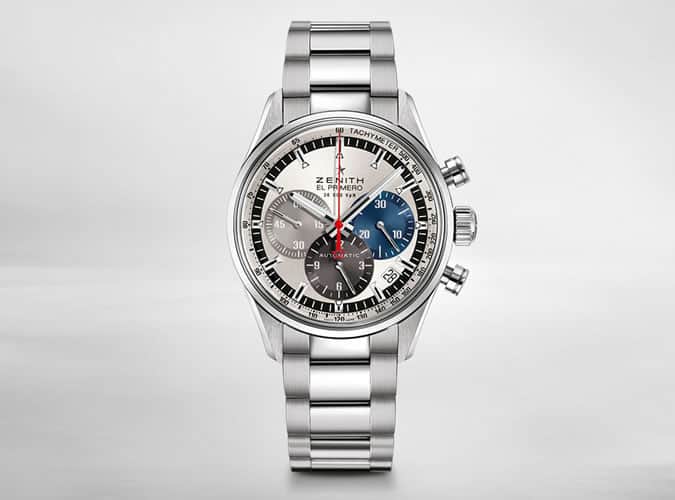Every now and then a stop-the-press timepiece comes along that sends tremors through the industry. Design strategies have to be recalibrated, a component that has been used in a movement for years is rendered redundant by a new innovation, or the bar is raised when a watch proves its mettle in harsh new terrain – the bottom of the ocean, for example, or the surface of the moon. The influence of such a watch can reverberate down the decades and serve as a template for new generations of watchmakers. Or even re-boot a country’s entire watch industry. It’s fair to say that all contemporary timepieces, in one way or another, stand on the shoulders of these eight giants.
Rolex Submariner
Before the Submariner burst onto the scene in 1953, Rolex had already been making watches with waterproof cases for 27 years. But when in 1960 a Swiss father-and-son team, Auguste and Jacques Piccard, descended to the bottom of the Bay of Naples with a Rolex Deep Sea Special bolted to the side of their submersible, it showed Rolex was ready to take diving watches to the next level. The first Submariner – water-resistant to 100m – was released the same year and since then has been frequently imitated, yet never bettered.

Omega Speedmaster
To be the first watch worn on the moon, Omega’s Speedmaster Professional was subjected to a barrage of tests that included being immersed in liquid heated to 93°C. Out of 10 watches put to the same test, only the Speedie was still running with the acceptable variation of five seconds a day. It has since been the official watch for all NASA space missions and has served as a useful barometer for every chronograph since. If your watch performs as well as a Speedmaster in tests, you’ve got yourself a seriously fine timepiece.

Seiko Astron
At the tail end of the 1960s, the race was on to produce a quartz wristwatch for the masses (prototypes had existed for several years). Seiko of Japan beat the Swiss to it in December 1969 with the Astron, which cost the same as a medium-sized car at the time. The watch now has the honour of being registered on the List of IEEE Milestones – along with the invention of the barcode and the Compact disc – as a key advance in electrical engineering.

Swatch
Still on the ropes after the quartz crisis, the Swiss fought back in 1983 with the launch of their own quartz watch, the Swatch, which was a huge boost to the lower end of the Swiss watch industry. Available in a wealth of colours and styles, the first batch was scheduled to number just 10,000 pieces. By 2006, around 350,000,000 had been sold. The Swatch Group bought up several top watch brands, including Omega and Longines, and eventually propelled them into a new era of prosperity. Making Swatch arguably the most important watch ever.

Casio G-Shock
Introduced the same year as the Swatch, Casio’s G-Shock has been more of a slow-burner, having been launched – in typically modest Japanese fashion – with none of the fanfare of its Swiss cousin. In the 33 years since, the hugely influential G-Shock has brooked few rivals for the title of Toughest Timepiece. Famous for being able to function perfectly well after a severe pummelling, it rightly deserves its huge fanbase, comprising everyone from rappers to special ops soldiers.

Panerai Luminor
Sylvester Stallone became an unofficial Panerai brand ambassador in the mid-nineties when he bought a Luminor – one of the watchmaker’s best known models – on a trip to Rome and then wore it while shooting disaster romp Daylight. Within a couple of years the company had been bought by luxury goods holding company Richemont and watch cases everywhere seemed to expand, regardless of the fact that most of us don’t have Rambo’s sinewy wrists. U-Boat, TW Steel et al owe their existence to Sly and his Italian jolly.

Zenith El Primero
In 1969 Zenith achieved what was then the Holy Grail for watch engineers: introducing the first automatic chronograph just ahead of a developmental group that included Tag Heuer and Breitling. They called it El Primero (‘The First’) and the Le Locle-based company’s pièce de résistance is still in production today. Though automatic chronographs are par for the course now, this was one of the most important milestones in horological history.

Hewlett Packard HP-01
Long before the term ‘smart watch’ was ever bandied about, and one year after the Apple company was founded, Hewlett Packard launched the first calculator wristwatch ever sold to the public. It also had an alarm, a stylus (with accompanying pen) and could tell you the day of the week for any day from 1900 to 2099. Launched in 1977 and discontinued in 1979, the HP-01 opened up the possibilities of what a watch could be.








